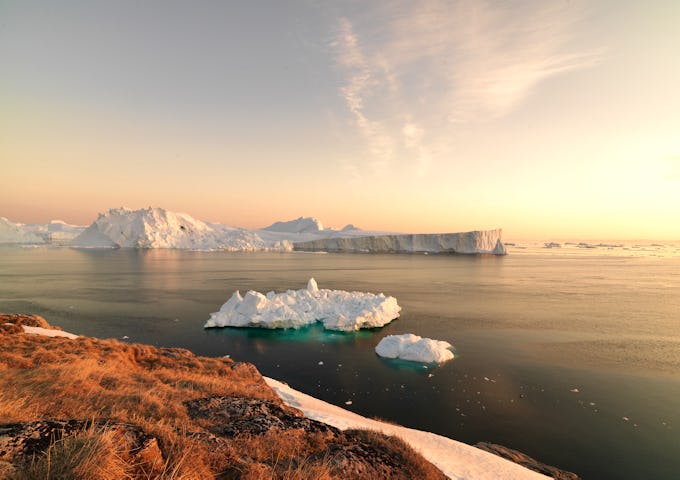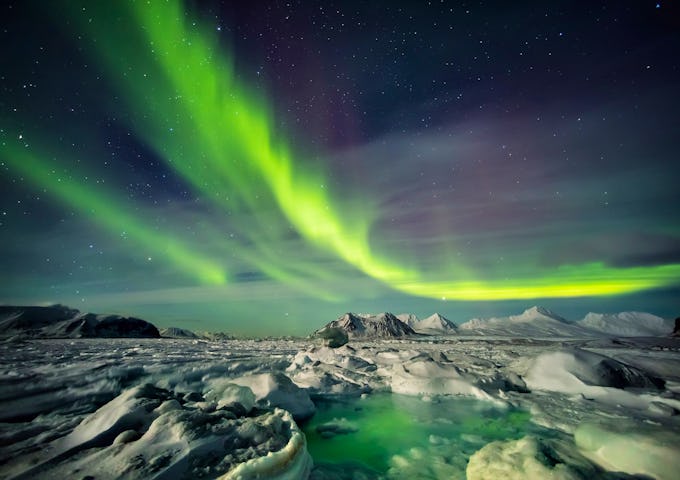
Greenland Ships
The combination of Greenlandic life being largely focused on the coast, a ravishingly beautiful coastline and a limited infrastructure on land makes ship-based travel the perfect …
Discover MoreSpecial Offers Available: Swoop has access to the widest range of offers and can help you find the right trip, cabin, & price.
Expert impartial advice at no extra cost: no-nonsense advice on 500 voyages across 25 ships
The Arctic Experts. No Compromises: there’s no question we can’t answer
The only B Corp certified Arctic specialist: so your adventures can be a force for good
A full concierge service, unlike booking direct: we leave nothing to chance in delivering your perfect trip
Special Offers Available: Swoop has access to the widest range of offers and can help you find the right trip, cabin, & price.
Expert impartial advice at no extra cost: no-nonsense advice on 500 voyages across 25 ships
The Arctic Experts. No Compromises: there’s no question we can’t answer
The only B Corp certified Arctic specialist: so your adventures can be a force for good
A full concierge service, unlike booking direct: we leave nothing to chance in delivering your perfect trip

Greenland assaults your senses with pure air, crystal waters, blue ice, staggering fjords, a fascinating past and a welcoming present. Whether you are whale watching in Disko Bay, exploring Nuuk or trekking the cliffs of Scoresbysund Greenland gets under your skin and you'll soon want to go back for more.

Ilulissat glacier at sunset

A hiker overlooks a glacial front

The fluke of a diving humpback whale

Iceberg reflections in Scoresbysund

Northern lights over the Greenland Ice Cap in Spring

Admiring pancake ice from the bow

Sisimiut blanketed in winter snow

Muskox in the lowlands during summer

Ice sculptures in Scoresbysund

The beautiful low light of an early season sunrise

Majestic glacial ice in Disko Bay
Greenland is huge and bound in ice for much of the year. The ships that do explore this beautiful remote land travel in July, August and September, and if you want choice, book as early as you can.
Temperatures remain well above freezing, even early in the season. Later in August and September is your best chance of seeing the Northern Lights, but no matter when you depart, ice is a big factor, so you'll need to be flexible and consider the strength of the ship you choose.
With fewer polar bears in much of Greenland there are also opportunities to get some longer treks in, which can be hard to achieve in other regions. Ensure your ship facilitates being active if you want to get out and about.

Greenland is vast, and whether you choose to explore the wild east, populous west, or historic south coast, you can expect daily off-ship excursions showcasing the best of each distinct region.
Special Offers:Swoop has access to the widest range of offers and can help you find the right trip, cabin, & price.

Introductions to the High Arctic don’t come much better. Traverse wildlife-rich Svalbard via East Greenland’s towering icebergs and autumnal tundra, then continue on to Iceland. Aurora sightings are possible at any point.…

This might be a short trip but it packs a huge amount in. Sail among the ice of Disko Bay and spot humpbacks hunting herring; trek to the look out over Jakoshavn Glacier; explore the settlements of Sisimiut and Itilleq…
While Greenland has more than enough appeal on its own, combining East Greenland and its near neighbour, Svalbard, makes for a spectacular longer cruise of great contrast and variety.
Special Offers:Swoop has access to the widest range of offers and can help you find the right trip, cabin, & price.

Introductions to the High Arctic don’t come much better. Traverse wildlife-rich Svalbard via East Greenland’s towering icebergs and autumnal tundra, then continue on to Iceland. Aurora sightings are possible at any point.…

For the ultimate Arctic experience this unparalleled 24 day voyage is hard to beat. Created by splicing together two popular voyages, it maximises on wildlife sightings, with exploration of East Greenland’s deep fjords and towering icebergs and delivers extended time…

This comprehensive Arctic triumvirate encompassing Svalbard, East Greenland and Iceland offers the best of the Arctic: some of the best wildlife viewing with spectacular scenery, unspoiled fjords, gigantic icebergs and Inuit communities. You may also be lucky enough to see…

Beginning in Svalbard before sailing west across the Greenland Sea and exploring Greenland’s long eastern coastline to finish in Iceland, this is an audacious Arctic journey of startling diversity and contrast. Spectacular landscapes, towering glaciers and once-in-a-lifetime wildlife encounters all…
Divided by a short sail across the Davis Strait, combining the spectacular coast and picturesque villages of West Greenland with the wildlife and history of the Canadian Arctic works brilliantly.
Special Offers:Swoop has access to the widest range of offers and can help you find the right trip, cabin, & price.

Traversing west to east this voyage takes you to iconic sites such as Cambridge Bay, Lancaster and Smith Sounds and Ellesmere Island, before exploring the fjords and towns of West Greenland. Bears, narwhal, musk ox, beluga and northern lights are…

Spending time exploring Canada’s historic Northwest Passage and West Greenland, we like this voyage’s balance and variety as much as exploring little visited spots such as Thule, one of the northernmost towns in the world, and Smith Sound. Big ice,…
Most cruises start and end in Kangerlussauq, which sits at the head of a stunning fjord and close to the ice cap. It boasts a long airport runway and is the most populated region of Greenland. The west coast is also home to the capital Nuuk, where you can discover the UNESCO world heritage site in Ilulissat Icefjord, with its huge icebergs and picturesque settlements.
These waters are rich in nutrients that nourish the countless whales and seals which call these waters home in the summer months. Cruises in West Greenland often focus on Disko Bay, and it's also a great place to start or end a cruise into the Northwest Passage.

Traditional Greenlandic village
This is Greenland's wildside. Sparsely populated and lacking any significant infrastructure, exploring the East of Greenland by any means other than boat is something of a challenge. You'll discover pristine landscape, sumptuous fjords and ice, all on a truly gigantic scale.
Life has not changed significantly since the arrival of the Thule people for the 3,500 residents of East Greenland. There is always a friendly welcome and a chance to learn about their customs while you explore this land of ice and mountains.
Expeditions in East Greenland usually focus on Soresbysund fjord and are often combined with travel to Iceland and Svalbard; making for a truly spectacular Arctic experience.

Electric blue icebergs in Scoresby Sund, East Greenland
Perhaps the most verdant region of Greenland, South Greenland is commonly referred to as the 'Garden of Greenland'. Eric the Red is said to have first landed here, naming the country as he did. Southern Greenland is steeped in history, with beautiful fjords and colourful valleys offering amazing trekking experiences for the active explorer. There are even hot springs to relax in at the end of a long trek.
The culture is also particularly distinct. Small farming communities are joined by dirt tracks and hiking trails, and have strong links to the north pacific countries given that Reykjavik is closer than Nuuk. Expeditions in South Greenland generally start in Iceland and continue to West Greenland.

Narsarsuaq, South Greenland
Wonderful, beautiful, serene and simplistic. Read the full review
Travelled: August 2019
Susan Cooke - United States of America
Review:
Much of Greenland's population rely on hunting to serve them through long winters; living in sparsely located settlements where supply ships are rare. While there is plenty of wildlife in Greenland, it tends to avoid settlements and can be a bit harder to spot than in other parts of the Arctic.
You are likely to see a host of marine wildlife with humpbacks, beluga and greenland whale as well as narwhal and seals. On land you will be lucky to see a polar bear; although they are there and have been known to walk into some of the remote communities, you are far more likley to see Musk Oxen. There is a rich tapestry of birdlife both on the sea and the land, with species such as sabines gull, loons and the white tailed eagle.

Muskoxen on the Greenlandic tundra

Sunset as you approach Greenland
As your floating hotel and basecamp, it's crucial to choose the right ship. Smaller ships plying Greenland's waters host around 50 passengers, and the largest around 200. Levels of comfort and cabin types vary, so you can find a ship that meets your preferences best.
A ship's ice-strengthened capabilities and stability are important criteria if considering either an itinerary with a sea crossing or where there's a chance to experience heavy ice (East Greenland and Northwest Passage).
It's a tricky question as each region is so distinct, but in short:
Cruises of Greenland operate during the summer months between June and early September when the opening up of the ice allows passage along the coastline. However, East Greenland cruises and those combining with Canada's Northwest Passage are only in late August and September.
You may see some wildlife - musk oxen and birdlife particularly - but Greenland isn’t renowned for wildlife in the same way as Svalbard and Canada's Northwest Passage. You would certainly be very lucky to see a polar bear, and only in East Greenland. If seeing wildlife is your primary objective then there are better places in the Arctic.
It depends on the timing of your cruise. Due to the constant 24 hours of daylight in high summer (June - August), you won't get to see them. The best chances for experiencing the extraordinary Aurora Borealis are on a September cruise when the rapidly drawing in nights of early autumn provide the ideal conditions. Greenland is a particularly good place for seeing the Northern Lights from our own personal experience.

The combination of Greenlandic life being largely focused on the coast, a ravishingly beautiful coastline and a limited infrastructure on land makes ship-based travel the perfect …
Discover More
With planned daily excursions accompanied by your team of polar experts, expect active exploration on foot and by zodiac - from slaloming between icebergs, learning about the rich …
Discover More
For such a large country surrounded by close neighbours, it isn’t a straightforward place to get to, but this is very much part of Greenland’s charm. Whether travelling by air …
Discover More
Greenland wears very different cloaks depending on when you choose to visit: spring, summer or autumn. Each has its own enchanting characteristics making it tough to decide which …
Discover MoreWe'll spend some time listening to your aspirations, then discuss the kind of experience that might suit you.
Next we'll discuss the options, shortlist the best trips for you and present you our impartial recommendations.
We'll place a 24 hour hold on your preferred option - without obligation - whilst we talk through the details.
Our team of experts are ready to help you with any questions about a trip to the Arctic.
This website uses cookies to ensure you get the best experience on our website. Privacy policy